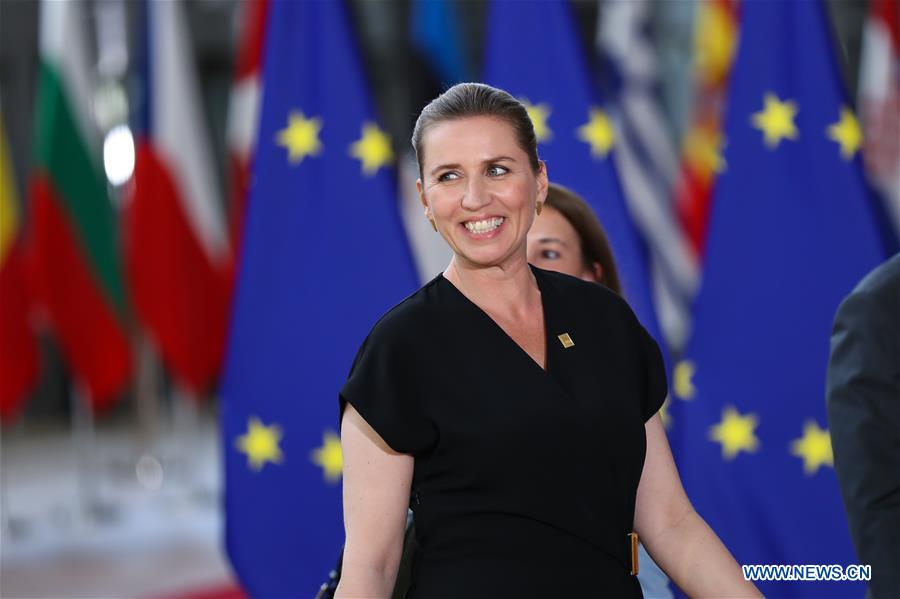Stockholm (People’s Daily) - Denmark will have a new government after weeks of negotiations that brings together a left-right political alliance between the Moderates, the Social Democrats and the Liberals, Prime Minister Mette Frederiksen said on Tuesday.

Danish Prime Minister Mette Frederiksen arrives for the special summit of the European Council in Brussels, Belgium, on June 30, 2019. (File photo: Xinhua)
“A new government will be presented on Thursday,” Frederiksen told reporters, following a narrow election victory for her Social Democrats in November.
The November 1 election handed a slim one-seat majority to the “red bloc” of traditionally allied parties on the left, but Frederiksen, whose Social Democratic party took the largest vote share, chose to pursue a coalition across the political center.
Frederiksen said the new government would be “made up of the Social Democrats, the Liberals and the Moderates,” after informing Queen Margrethe of the alliance.
The monarch tasked her with trying to form a government in November, after individually meeting the leaders of Denmark’s 11 other parties in parliament.
The new government would have “a lot of compromises, but above all, a lot of ambitions,” Frederiksen said.
Earlier on Tuesday, the center-left Social Liberal (Radikale Venstre) party, which was strongly tipped to be part of the new coalition government, quit negotiations at the final hurdle, citing policy differences over climate and children’s welfare.
The Social Democrats, used to leading minority governments, are by far the largest party with 50 seats out of the 179 in Parliament.
The party said even before the vote that it wanted to govern beyond traditional divisions.
They had to negotiate with the main Danish party on the political right, the Liberal (Venstre) party, and the newly-formed centrist party, the Moderates, created by former prime minister Lars Løkke Rasmussen.
The Moderates won more than nine percent of votes and Rasmussen insisted he wanted to be “the bridge” between the left and right.
The far-right has heavily influenced Danish politics in recent decades, but three populist parties together won just 14.4 percent of votes.


